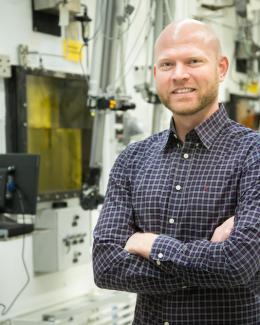Abstract
The development of targeted alpha therapy (TAT) as a viable cancer treatment requires innovative solutions to challenges associated with radionuclide retention to enhance local tumor cytotoxicity and to minimize off-target effects. Nanoparticles (NPs) with high encapsulation and high retention of radionuclides have shown potential in overcoming these issues. This article shows the influence of pH on the structure of lanthanum vanadate (LaVO4) NPs and its impact on the radiochemical yield of 223Ra and subsequent retention of its decay daughters, 211Pb and 211Bi. An acidic pH (4.9) results in a high fraction of La(223Ra)VO4 NPs with tetragonal structure (44.6–66.1%) and a 223Ra radiochemical yield <40%. Adjusting the pH to 11 yields >80% of La(223Ra)VO4 NPs with monoclinic structure and increases the 223Ra radiochemical yield >85%. The leakage of decay daughters from La(223Ra)VO4 NPs (pH 11) was <5% and <0.5% when exposed to deionized water and phosphate-buffered saline, respectively. Altering the surface chemistry of La(223Ra)VO4 NPs with carboxylate and phosphate compounds resulted in a threefold decrease in hydrodynamic diameter and a 223Ra radiochemical yield between 74.7% and 99.6%. These results show the importance of tailoring the synthesis parameters and surface chemistry of LaVO4 NPs to obtain high encapsulation and retention of radionuclides.






